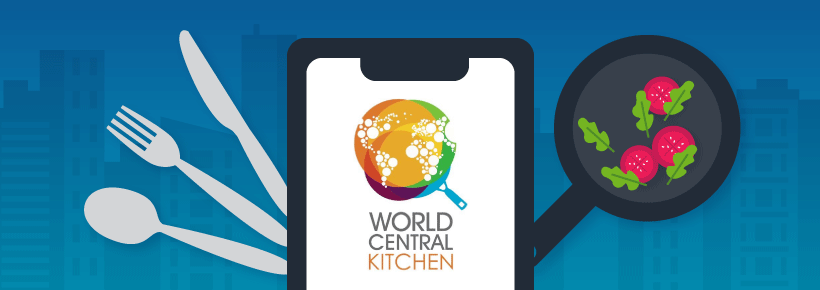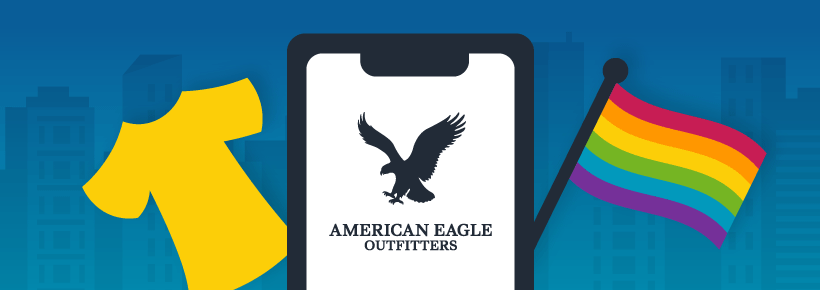It’s all the rage among businesses to have a social platform — a “why” or a mission or some public-facing page on the company website that aligns a brand with a social cause. Granted, behind the scenes, most companies spend a lot of time and effort choosing which causes they align with, and how much they take a stand versus when they sit down and stay away from potential controversy.
With social media backlash an ever-present threat in today’s volatile social media scene, corporate social responsibility has become something to navigate very carefully. One option is to do good in relative silence, and hope that it touches the community or beneficiaries in the way you hoped — without fanfare. But ideally, anyone in communications wants to showcase their philanthropy or corporate citizenry or admirable values on to the world, in hopes they are positively received.
So, how do marketers lay the groundwork of a campaign that will create positive conversation? It is key that a brand supports an initiative that is important to the employees and authentically aligned with the company’s values. Never just piggyback onto the social justice meme of the moment. Steer clear of all things exploitative or gimmicky, and look for ways to get people involved via social media regardless of whether they donate or not. If they like what they’re viewing on social, they may be inclined to donate — or even buy your product — without your brand needing to integrate their logo into every frame or end the messaging with an aggressive CTA.
Four responsible social campaigns that are doing it right:
Airbnb
The Initiative: Airbnb Open Homes
No-cost temporary housing for disaster victims and first responders — promoted via mainly organic social media sharing and earned media. Victims and relief workers in need of emergency housing can go on the AirBnB Citizen site or main Airbnb app and communicate directly with hosts who have volunteered to open their homes. Both guests and hosts must register for an Airbnb account to access the program.
What’s Good Here: Airbnb demonstrates with this program that its vast network of peer-to-peer rentals can be used for something other than undercutting hotels and traditional vacation rentals. The long-touted benefits of booking through Airbnb (e.g., a “real person” host, a way to stay in residential communities rather than tourist zones, access to more affordable spaces for families) are showcased to their ultimate potential.
The program allows hosts to do something good, and very necessary, with a space that they already possess. And it leaves disaster survivors with an indelible memory of the good citizens — and the platform — that helped shelter them in their hour of greatest need.
Social Media Component: Airbnb is a social native company, but this particular program operates mainly through Facebook group networks and targeted promotion in areas that have been struck by natural disaster.
Jose Andres
The Initiative: World Central Kitchen
Celebrity chef Jose Andres activated his World Central Kitchen Chef Network to swiftly pull together food service volunteers, organize logistics and distribute mass quantities of fresh food to hurricane-ravaged areas. He even got other famous chefs to lend their star power. Using the hashtag #ChefsForPuertoRico, Andres created a way for celebrities, caring cooks and citizens to unite in supporting the island immediately after a natural disaster.
While media were all over the story in the 30 days after the hurricane, coverage of World Central Kitchen slowed down with each news cycle. However, Andres and his team did not pack up their spatulas and go. Instead, after there was no more immediate need to provide hot meals, WKC switched focus to ongoing programs such as a grant program. World Central Kitchen’s activities have increased and broadened in the past two years, with the Chef Network leading initiatives in Guatemala, Indonesia and Haiti — some in the quick-response disaster relief arena, and others in social enterprise, for example investing in new boats for Haitian fishermen.
What’s Good Here: Everything is good about Chef Jose Andres’ efforts to harness food and foodservice for social impact. While Hurricane Maria put World Central Kitchen onto the international mainstream spotlight, people in food, restaurant and philanthropy circles already knew that World Central Kitchen was growing into a true force for positive change. Chef Andres’ career as a restaurateur is in a new phase of mass expansion, and he continues to use the power of his personal brand to engage more people and brands in his cause.
The Social Media Component: Chef Andres’ use of Twitter and Facebook to communicate from Puerto Rico set a new model for how private citizens can galvanize relief efforts and challenge the government to greater action. The smartphone videos he posted on Twitter were heartening and truly inspirational. Seeing the world-famous chef almost in tears because he wished he could do more got millions of people opening their wallets. It also familiarized a few million more potential customers with the chef. With WKC’s expansion into other under-resourced regions, if you see #ChefsforVenezuela, #ChefsforGuatemala or pretty much any #Chefsfor hashtag, you can assume it was created or inspired by this network of humanitarians and chefs.
American Eagle Outfitters
The Initiative: Since 2017, American Eagle Outfitters has invested in Pride Month (instead of merely “rainbow washing” as many retail brands are accused of) with the “It Gets Better” collection — a limited clothing line done in partnership with It Gets Better Project, accompanied with a social media-driven UGC stories campaign. Many people don’t even realize that American Eagle Outfitters is the parent company of social media darling Aerie. Instead of going down the same slippery slope toward irrelevance as many Nineties brands, American Eagle has embraced and expanded a commitment to diversity and inclusion. Aerie has been a frontrunner in responsible fashion advertising since its inception. The super-inclusive underwear brand is known for embracing all shapes and types in its marketing, sizing and CSR.
What’s Good Here: A special clothing collection released just for Pride could be either very opportunistic or very socially responsible. The determining factor is what portion of the proceeds go to the foundation. In this case, 100% is the answer. It’s great to see an all-American brand from the heyday of shopping malls take a pro-LGBTQ+ stance, not just for one day and not just to monetize, but through its products and tied directly into one of the most prominent activist groups for LGBTQ+ youth.
Social Media Component: Aerie is a case study in using social media to push the envelope, differentiate from the competition, and showcase a brand’s values. It has always been known for using the most diverse models (who are mainly not models in the traditional sense) to showcase its products. Also — and this is massive in the Instagram era, but would have been equally bold 20 years ago when magazines ruled — it hasn’t retouched its advertising photos since 2014.
But parent company American Eagle hasn’t, till recently, gotten nearly as much attention from the social native generation. The brand seems eager to change that, with the curated UGC social component of the “It Gets Better” collection being just one 2019 effort to engage 18-25 year olds. A larger campaign, AExME, identified 10 Generation Z “cast members” through scouting on social channels alone, and then let them direct and shoot self-portraits that would become an integrated campaign — across socialv channels and in-store displays.
Aeromexico
The Initiative: DNA Discounts
Although tension levels continue to escalate around the topics of immigration status and racial identity, a lot of people from the States still feel affinity toward our southern neighbor. Many feel outright ally-ship, while others have the more convoluted and complex affection of loving to visit Mexico and other parts of Latin America, while not feeling comfortable with a free flow of individuals between the borders. Aeromexico’s cheeky and subversive DNA Discounts program targeted the latter group — playfully and generously — by offering discounted flights to United States citizens based on the amount of Mexican DNA that they were proven to have through DNA testing. The campaign ran in Southern states including Texas, Arizona, Louisiana with the northeastern-most being Tennessee.
What’s Good Here: Part of the brilliance was in the casting: At least in the videos that went viral, the test subjects were completely convinced of their pure Caucasian/European heritage, so it was somehow a shock when the test results turned up anywhere from 10-25% Mexican DNA. They were also the type of people who talk a lot of trash about Mexico, but love discounts and might be convinced to book a ticket if the price was right. And finally, they were good enough sports to allow themselves to be shown on video in a not-so-great light. (More jaded marketers might wonder just how they were compensated for their participation beyond receiving a discount on tickets.)
The other part of what was great about this campaign was that Aeromexico took the initiative to build a bridge between Mexico and the US citizens who disparage it the worst. Instead of leaving them to stew in their DNA results, the brand figured out how to actually provide incentive to travel there, while also reinforcing the knowledge that nobody’s ancestral lineage is completely one thing or another.
Social Media Component: The best — funniest, most incredulous, even profane — responses to this social experiment were edited into a digital spot about 3 minutes long that wound up getting millions of views across social media channels YouTube and Facebook. The campaign got coverage on CNN, Travel & Leisure, Buzzfeed, AdAge and other national outlets.







